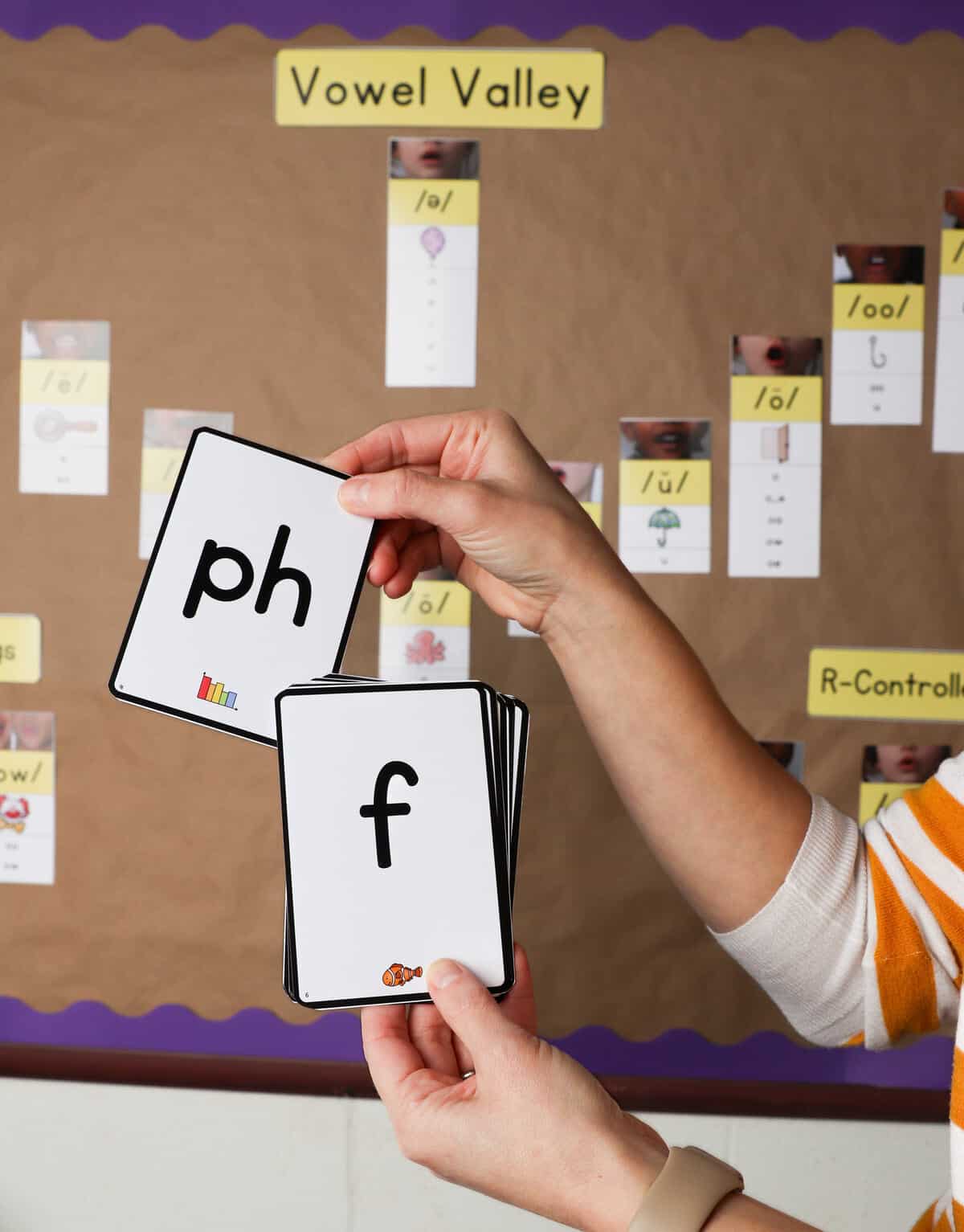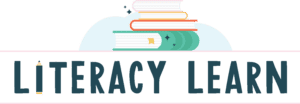Free Spelling Inventory + Tips for Using Them
This post may contain affiliate links. As an Amazon affiliate, we earn from qualifying purchases.
Read all about spelling inventories, an important assessment tool for teachers! Learn what they are, and how to use them, and get a free and simplified version (3 pdfs) to use with your students.

📝 What Is a Spelling Inventory?
A spelling inventory is a task given to kids to assess their current spelling and encoding skills. The teacher dictates words, beginning with simple words and moving on to more complex words. As the teacher dictates words one-by-one, the students write the words.
The inventory is then used to analyze the students’ understanding of language. It pinpoints what a student knows and doesn’t know.
It’s easy to implement and customizable, and best of all, it gives the teacher valuable information about a student’s current understanding.
This will help guide your instruction and appropriate scaffold different classroom assignments.
💯 Benefits of Using Spelling Inventories
Spelling inventories are such a powerful tool! In my experience, all elementary teachers should be using them!
Why should you be using a spelling inventory with your students?
- It only takes about 10 minutes and is a super easy task to administer.
- It works for whatever teaching role you may have. It can be given whole group, small group, and individually.
- A spelling inventory gives a sample of a student’s understanding and knowledge of the systems the students have in place (e.g. phonological, orthographical, morphological).
- Spelling inventories provide valuable data and insight. They clearly show what students know and what gaps they still have. Teachers can look at errors and decide where to go next with their instruction.
- Spelling inventories can help identify trends in your classroom or grade level.

👩🏼🏫 How to Use a Spelling Inventory
There are simple steps for utilizing a spelling inventory as a tool with your students: First, administering the spelling inventory, then analyzing the spelling inventory.
This process will provide you with rich, important, individualized information to guide your instruction!
Administering the Spelling Inventory
- Collect your materials. 👉 Scroll to the bottom of this post because we’ll provide all the materials you’ll need!
- Decide how you plan to administer the spelling inventory. If you have students with attention or special education needs, you may want to administer it separately in small groups or individually.
- Be sure you tell your students it isn’t a graded assessment!
- The teacher reads a word, uses it in a sentence, and repeats the word.
- The student spells the word.
- Repeat steps 4-5 until the entire list of words is completed.
Analyzing the Spelling Inventory
Now, the most important part comes once you’ve finished administering the spelling inventory. Why? Because the power is in the analysis!
We provide you with a simplified 1-page version for your analysis. No more lengthy charts that are so hard to read and interpet.
- Using the student’s work, circle/highlight the student’s errors.
- Using the Teacher Analysis sheet, analyze the data in each category. We have numbered and identified the target phonograms, making analysis a cinch!
- Use the data to identify trends.
- Then, let it inform your instruction and intervention.
- You will need to provide explicit instruction (reteaching) and many opportunities for repeated practice.
- You can quickly create skill-based groups that have explicit intervention based on the deficits.

For example, in the photograph above you’ll see this student consistently spelled short vowels, digraphs and consonant blends correctly.
Instruction should begin with VCe words and continue to long vowels following your scope and sequence.
📚 Tips & Info
- This spelling inventory is designed for k-4th grade, but can also be used with older, struggling students.
- Spelling inventories should be given three times per year and can be used to monitor progress. If you teach K/1, you may determine where to stop giving the inventory based on the needs of your class.
🙌🏼 Ways to Practice Spelling
So you’ve given the inventory and pinpointed the gaps and decided where instruction needs to begin. Now what?
Your students will need lots of opportunities to read, write, and spell, so that they can store the spellings in their orthographic memory.
Below are some of the BEST ways to practice spelling, and we’ll include links to products and freebies that you can use to help your students become great spellers.

✨ Read Word Lists
We include lots of phonics word lists, but we also have an Ultimate Word List Resource that has both physical lists and Google Slides™ with over 2000+ words.
Teachers love this because you can assign students the word lists in Google slides and kids can practice reading/rereading independently. These lists can also be used for dictation!

✨ Use Word Ladders
Using word ladders or word chaining is a super effective tool that bridges phonological awareness and phonics.
With our Word Ladder resource, you’ll get 78-word lists with 780 words for students to practice. You can also read this post and learn all about word ladders and get a freebie, too.

✨ Lots of Orthographic Mapping Practice
Ensuring that kids gets lots of practice connecting phonemes to graphemes is super important to turn unknown words into sight words, which kids can read and spell fluently.
We have lots of resources to help your students practice! Get our super popular Sound Box resource or our 5-Star rated resource Orthographic Mapping for All Skills.
Learn more about what the research says about orthographic mapping and get some free Orthographic Mapping sheets.

✨ Read Decodable Sentences & Texts
Decodable texts are designed so that kids can apply the knowledge they’ve been taught by decoding words and reading familiar high-frequency words they’ve been taught.
They also ensure children spiral back to reinforce previously taught skills and rules.
Grab our Huge Decodable Sentence Bundle which includes 500 decodable sentences in 3 forms (including Google Slides™). You can also read all about the best decodable texts and get links to hundreds of free decodables.

✨ Practice with Phonogram Cards
Using phonogram cards encourages multisensory instruction! Kids see, hear, say (and can even write) the graphemes.
Grab our beautiful phonogram cards! Included are versions with keyword pictures and without, plus prefix & suffix cards too! We love them because you can use them with any scope and sequence. Cards with long vowels (including Y as a vowel) include extras to swap out once you’ve taught the various sounds the graphemes represent.

✨ Dictation as a Tool
Dictation is such a powerful tool to help students encode as they learn to apply the skills in spelling practice.
To make it easy, use our Ultimate Word Dictation and Spelling Practice bundle!
🌟Teach Spelling Strategies
Learn SEVEN powerful spelling strategies for effective teaching!
Recommended Resources
📝If you are a concerned parent and want more information about your child’s current grade level for reading, writing, and spelling, you may consider getting a comprehensive Reading & Spelling Inventory. Our dyslexia therapy group can provide you with a full written report of your child’s strengths and weaknesses! Reach out to us today and get a free 15 minute consultation!
Below we’ve also listed out some great resources for learning about current research and best practices related to spelling, as well as some compiled resources and free printables:
- Speech to Print by Lousia Moats. The updated version now includes a workbook with practical exercises. This was the text used for our Lexercise training.
- Uncovering the Logic of English by Denise Eide. One of the very best and more affordable books that makes spelling easy to understand!
- Spelling for Life by Lyn Stone.
- Listen to this awesome podcast by Dr. Pam Kasner: Spelling: Visible Language to Inform Instruction and Intervention.
- Decodable Stories for Reading & Spelling
- Spelling Rules – Which Rules to Teach
- All About the Doubling Rule

Download & Print
DOWNLOAD TERMS: All of our resources and printables are designed for personal use only in homes and classrooms. Each teacher must download his or her own copy. You may not: Save our files to a shared drive, reproduce our resources on the web, or make photocopies for anyone besides your own students. To share with others, please use the social share links provided or distribute the link to the blog post so others can download their own copies. Your support in this allows us to keep making free resources for everyone! Please see our Creative Credits page for information about the licensed clipart we use. If you have any questions or concerns regarding our terms, please email us. Thank you!
Have you used spelling inventories with your students? If so, please share your best tips with us! Please leave a comment below or tag us on Instagram @literacylearn!


